Julius Romero Offshore and Onshore HSE Adviser and Medic
Julius Romero has more than 20 years of work experience in (HSE) Health, Safety, and Environment in various sectors in the oil and gas industries and in renewable energies offshore. He is working for Seaway 7 and has previous experience with many companies including Bluewhale Offshore. Julius is from the Philippines.
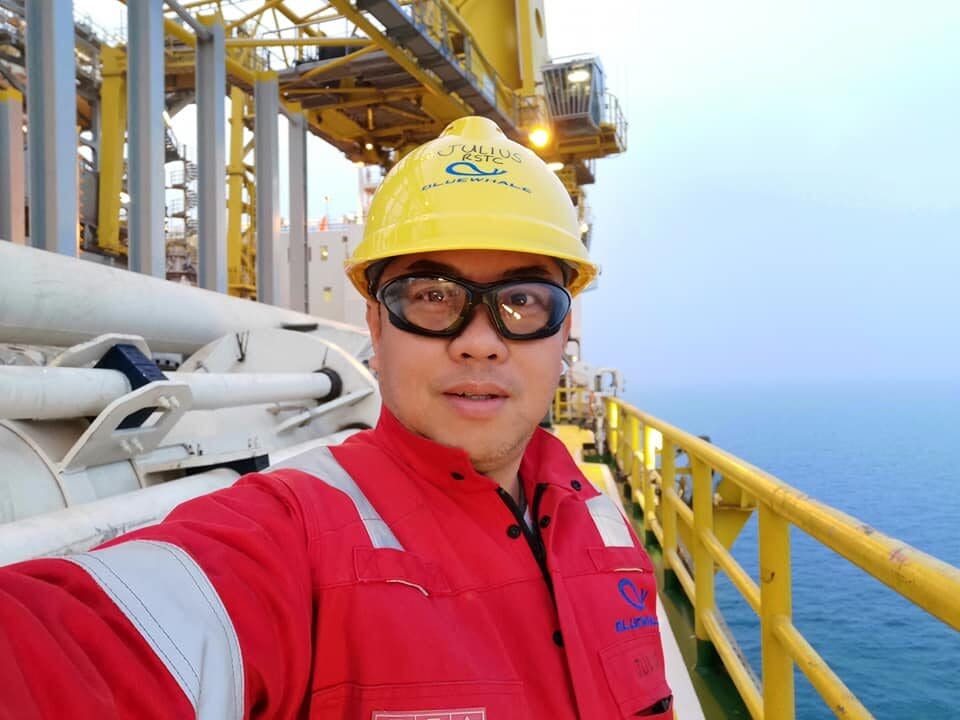

Background
Could you give a brief description of your background and what led you from a hospital to an oil rig?
I am a Registered Nurse (RN) by profession. Initially I have been trained and employed in a 500-bed capacity hospital where I was assigned to the ER (Emergency Room), OR (Operating Room), and Medical/Surgical unit. I studied Bachelor of Science in Nursing as a steppingstone to greener pastures and to one day land a job in the land of milk and honey. However, fate threw me into the oil and gas offshore business instead. However, I am still practicing my profession as an Occupational Health Nurse (Medic).
Were you interested in science and helping people as a child?
I was, in fact I do have a passion to help people in need. So, since I became a nurse, I have become more inclined to help people by sharing what I have learned in medicine.
Was there anyone in your family who guided you towards working in health?
No. There was none really. But my foster dad encouraged me to be a Nurse.
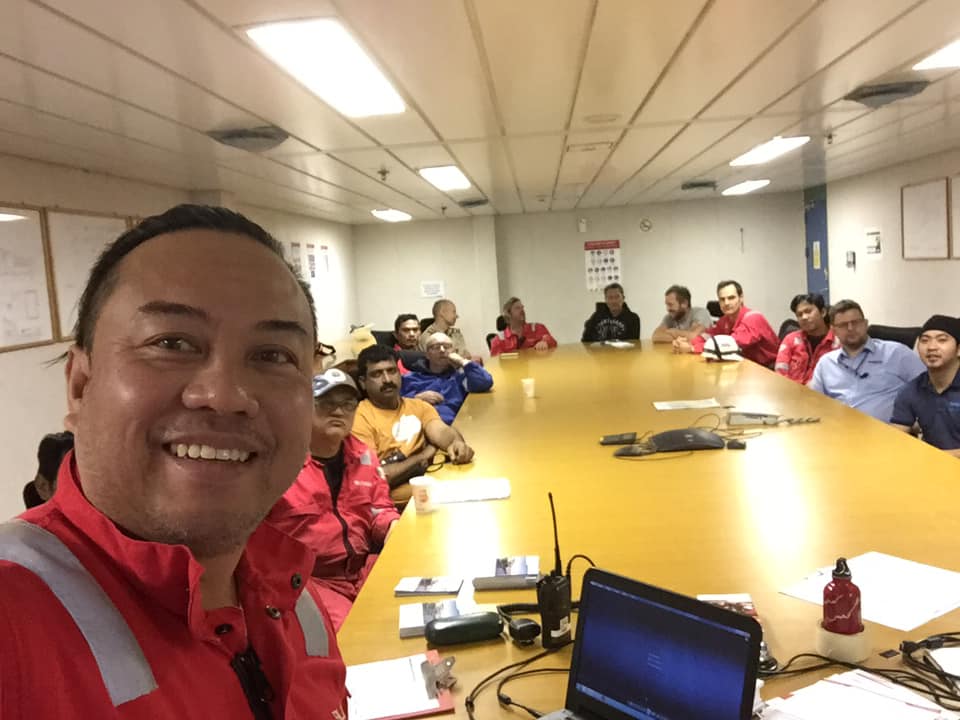

Type of work
What sort of work have you been involved in?
Over the years I have been involved in:
offshore drilling and exploration of hydrocarbons onboard oil rigs (Jack-Up, ultra-deep-water semi-submersible drilling rigs, shallow water semi-submersible drilling rigs),
marine construction vessels onboard heavy lift and pipe lay barges, and production platforms.
I was also involved in many rig repairs in the shipyard (Keppel Fels Singapore), and the re-activation of new-generation deep-water drilling rigs.
Additionally, I have been involved in onshore renewable energy such as geothermal drilling, workover drilling, and wireline operation.
Recent roles
Recently, I have been involved in the Renewable Energy (Wind Energy) sector, in the building and installation of an Offshore Wind Farm (OWF). My role includes being a Safety Advisor and Medic at the same time.
Currently, I am working on a project with Seaway Offshore Cable (Seaway 7) for the client’s developer WPD Yunlin in Taiwan, and CFXD where I played a key role in promoting the Health, Safety, Environment, and Quality of our operations offshore. During this time, I was involved in the management of Covid 19 in our operations during the pandemic. Our scope of work includes trenching, cable pull-in, hang-off, stripping, routing, termination, and testing.


Working as a Safety Advisor Medic
What does your job involve when onshore?
When onshore. It is pretty similar to what everybody does in the construction industries. We usually started with a toolbox talk with our personnel, where we identify the risk or hazards in our particular activities of the day and mitigate these risks using all the available means. We need to ensure that all personnel involved will go home safely and be with their family at the end of the day.
On a regular basis, as an HSE advisor we have training programmes that need to be delivered. Examples of these courses are:
Basic Life Support,
Manual Handling,
Working at Height,
Hydrogen Sulphide awareness (this one is key for those involved in geothermal drilling as the likelihood of the hydrogen sulphide gas coming to surface is inevitable).
Working offshore as a Safety Advisor Medic
What are you responsible for?
When you are in the business of (HSE) Health, Safety, and Environment you lead a positive HSE culture and behaviour across the company you represent and particularly within your sphere of influence.
This involves:
Champion the company’s Critical Safety Behaviour’s Programme by setting the tone and leading by example. Ensure compliance with all HSE policies, processes, and procedures.
Ensure a professional effective and efficient response to routine health requirements of the company’s worksites. Advise management on occupational health, hygiene, safety, and environment.
Oversee occupational health and hygiene issues and maintain health surveillance programmes and working environment monitoring.
Provide medical care including emergency and medical treatments, occupational health.
Oversee the running of the worksite hospital.
Ensure medical reporting and statistical information from worksites is filed appropriately with analyses/reports.
Provide training as required.
Support incident investigations and participate when required.
Assist with emergency drills and training.
Support toolbox talks and risk assessments, and actively participate when needed.
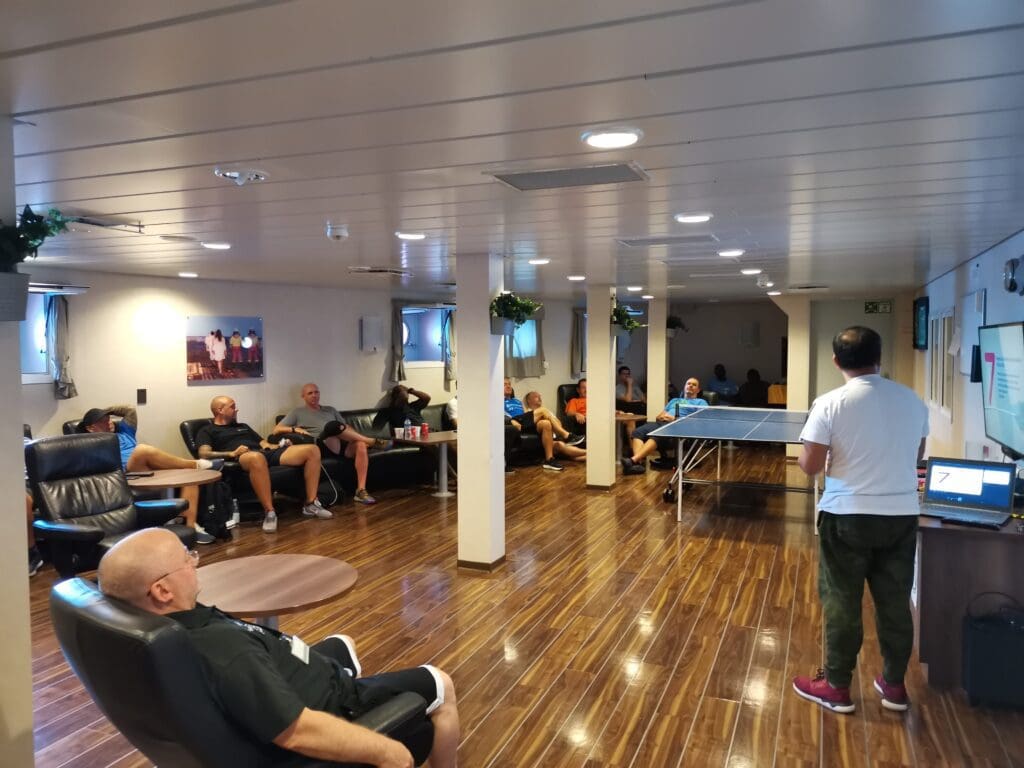

Which other members of the offshore team give you support?
The Offshore Management Team overseen by our Offshore Installation Manager.
What shift pattern do you work?
We usually work on a 12-hour shift offshore, this is also typical onshore when you are in the oil and gas business.
How do you create a work life balance when you are offshore?
It depends on the person. In my case, at least twice a week, I go to the vessel’s gymnasium to use the treadmill or stationary bike.
How much leave do you have between assignments?
Working in the oil and gas industries we have a typical work rotation to enable us to relax physically, emotionally, and mentally. So, we work on rotation such as four weeks on and four weeks off.
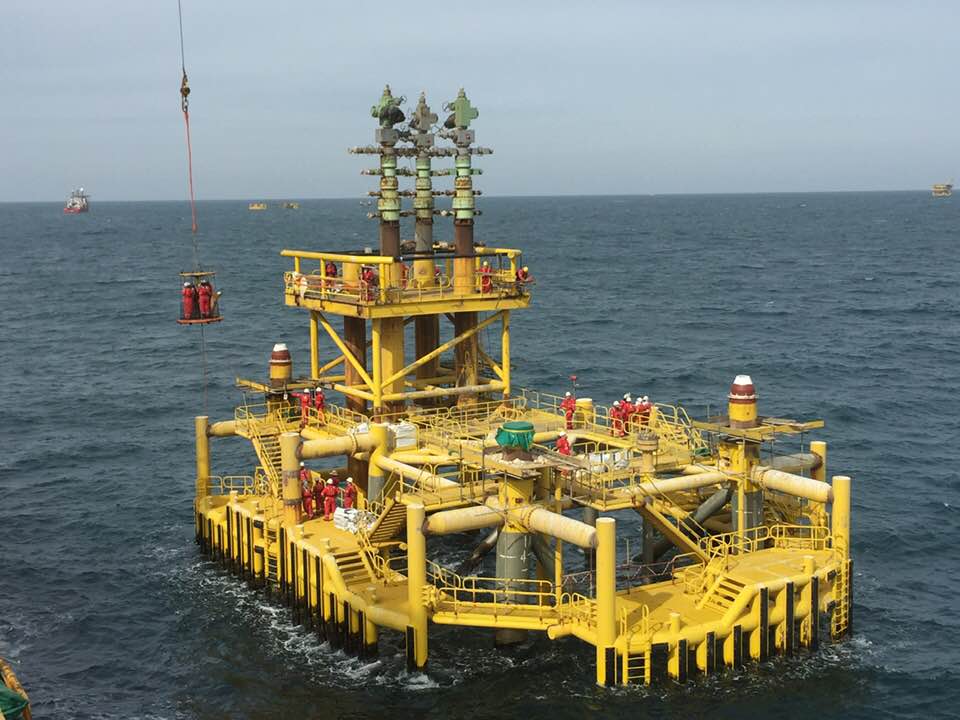

Typical week
What is your typical week like?
In the renewable energy or oil and gas industries especially offshore, every day is a Monday! Although, at times you will know that it’s Friday because it is Pizza Day, or Sunday because it is a steak day.
Modesty aside, we normally try to deliver what is expected of us. Because we work to a time frame, we have to ensure we have finished what we need to accomplish on a certain period of the day or week.
How much does weather affect you?
Weather wise, it is normal to experience rough seas and thunderstorms. The vessel will roll and pitch, getting seasick is normal for most individuals when you work at sea. This will only stop when you are on a jack up vessel, or semi-submersible when you are not affected by the movement of the sea.
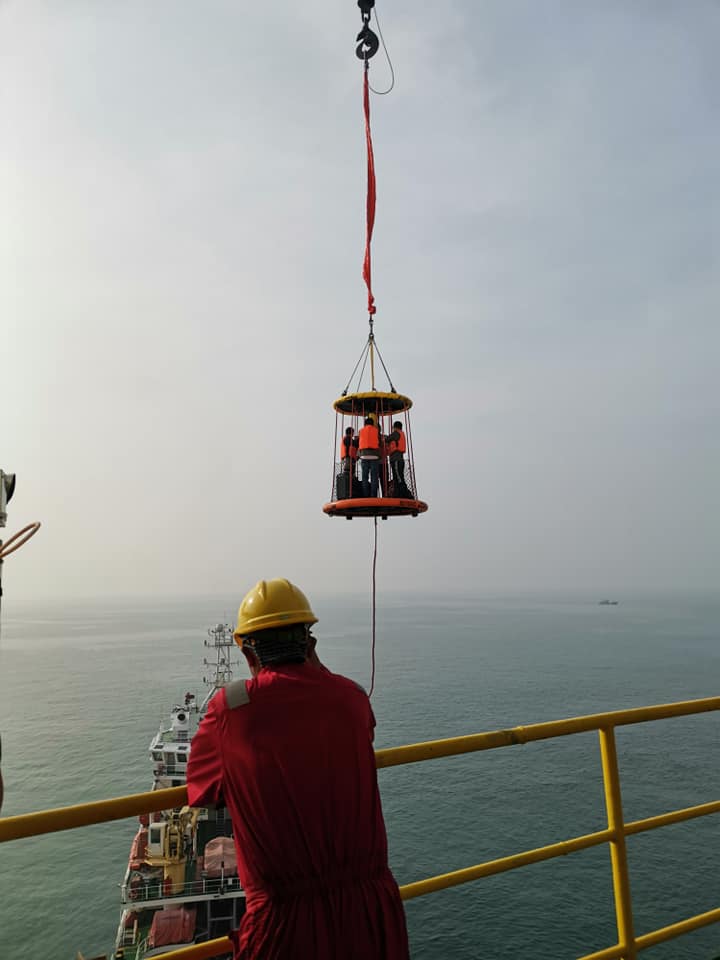

Most challenging part of the job
What do you find most challenging when you are working?
Every day is a challenging day. Being an HSE professional you are there to ensure that the company’s processes and procedures are being adhered to, although at times you rub elbows with co-workers because they bend the rules. But at the end of the day, you are family. Nobody wants you to get hurt. We look after each other, we want everyone to go home carry their own bag and to be with their family.
Supporting health and safety (and wellbeing)
In your opinion what are the key issues for employee health and safety going forward?
From my point of view Health and Safety these days is improving really well. But there is always a room for improvement. Most companies now have established their own HSE programmes based on international standards. The existence of on-line academies by most companies is amazing. Competencies of all workers are examined and evaluated. The safe system of work exists. As long as the company supports the Health and Safety programme, every employee can go home safely.
What is one of your key achievements?
I think, when I complete my rotation at the end of my tour and no one has been hurt, and no accidents have happened, I call it an achievement.


Positive HSE environment
What are the main ways you have of creating a positive health and safety environment throughout all the members of the offshore team?
I found the following relevant and would encourage HSE professionals to try this formula.
Establish a Safety Culture
Foster a culture that prioritises health and safety as a core value within the offshore team. This involves clearly communicating expectations, setting safety goals, and encouraging active participation from all team members.
Provide Adequate Training
Ensure that all team members receive comprehensive training on safety protocols, emergency procedures, and the proper use of safety equipment. Regularly update and reinforce this training to keep everyone informed and prepared.
Conduct Risk Assessments
Regularly assess and identify potential hazards and risks specific to offshore operations. Encourage the team to actively participate in these assessments and provide feedback. Implement measures to mitigate identified risks and monitor their effectiveness.
Positive HSE environment
Promote Open Communication
Establish effective channels for communication regarding health and safety matters. Encourage team members to report near misses, incidents, and safety concerns without fear of reprisal. Actively listen to their feedback, investigate incidents promptly, and implement necessary improvements.
Empower Safety Representatives
Designate safety representatives or safety committees within the offshore team to champion health and safety initiatives. These representatives can serve as a point of contact for safety-related issues, facilitate communication, and support ongoing safety efforts.
Regular Inspections and Audits
Conduct regular inspections and audits to ensure compliance with safety standards and identify areas for improvement. Follow up on identified deficiencies and track the progress of corrective actions.
Provide Adequate Resources
Equip the offshore team with appropriate safety equipment, personal protective gear, and necessary tools. Ensure that resources are regularly maintained, inspected, and replaced as needed to guarantee their effectiveness.
Encourage Accountability
Hold all team members accountable for their actions regarding health and safety. Promote a sense of personal responsibility and empower individuals to speak up if they witness unsafe behaviour or conditions.
Continuous Improvement
Foster a culture of continuous improvement by regularly reviewing health and safety practices and procedures. Seek feedback from the team, evaluate the effectiveness of existing measures, and implement necessary changes to enhance safety performance.
Recognise and Reward Safe Behaviour
Encourage and acknowledge safe practices and behaviours within the offshore team. Establish a system of rewards or recognition to reinforce positive attitudes towards health and safety and motivate ongoing compliance.


Future Offshore Medics
Why would you advise someone qualified in nursing to consider this type of work?
Well, I am delighted that somehow, there is a career for nurses offshore. However, this is not easy. For one, this requires an investment as there are training course which are required. However, it is rewarding. I guess, there is more money here than in the hospital unless you are a Nurse Specialist. I believe our paramedic military veterans are in this business already.
What are the key skills needed?
You should have taken some medical courses and spent a certain amount of time working in a hospital. These courses are needed:
Basic Offshore Safety Induction and Emergency Training (BOSIET)
Offshore Medic Certificate (especially in EU)
SA, MIST, DGA
If you wish to work in offshore renewable energy, they need the Global Wind Organisation (GWO) prescribed courses such as the Basic Safety Course (5 subjects).
What type of personality is needed?
You need to be strong to be able to manage homesickness.
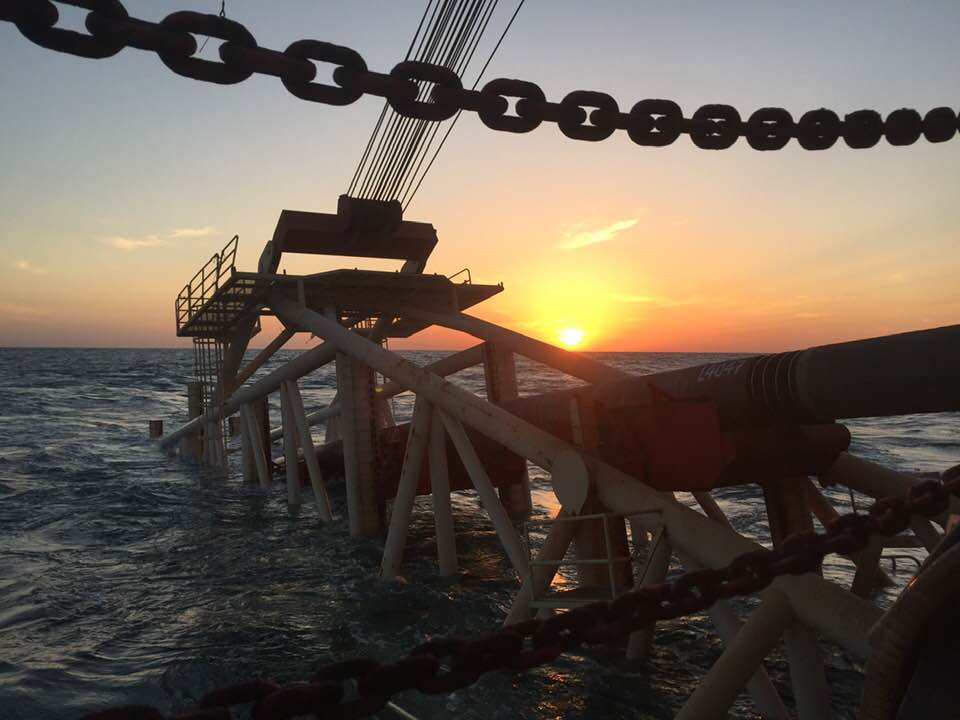

Further reading on HSE
Richard Meredith, Senior Manager at Edwards Vacuum supports the health and safety of over 2500 service engineers.
What 15 things should be on your personal Health, Safety and Environment – HSE list?


Responses